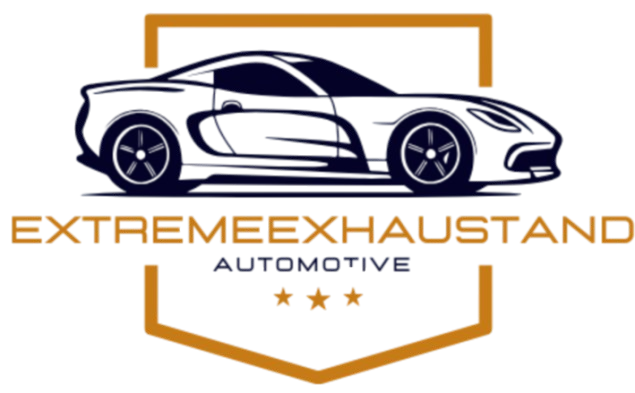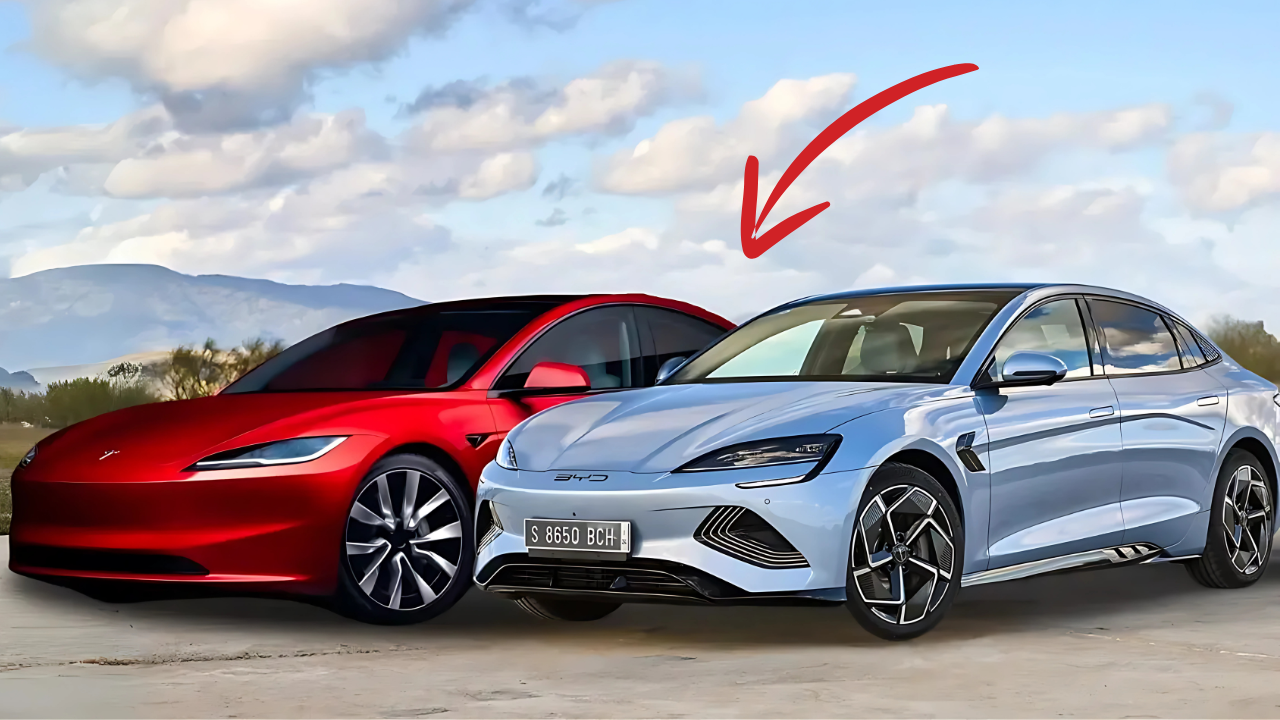The Electric Revolution Down Under
Australia’s electric vehicle market is experiencing unprecedented change in 2025. Chinese automaker BYD has emerged as a serious challenger to Tesla’s dominance, with the BYD Sealion 7 claiming the top spot in April 2025 EV sales with 743 units sold. This dramatic shift represents more than just numbers—it signals a fundamental transformation in how Australian consumers view electric mobility.
BYD achieved its 40,000th vehicle sale in Australia after less than three years on the market, a milestone Tesla took approximately 10 years to reach. The speed of this achievement demonstrates how rapidly the competitive landscape has evolved, with consumers increasingly drawn to BYD’s value proposition.
BYD’s Remarkable Growth Story
From Zero to Hero in Three Years
BYD‘s Australian journey began in 2022 with the launch of the Atto 3 compact SUV. The Chinese manufacturer’s strategy focused on offering practical, well-equipped electric vehicles at competitive prices. The company now projects selling 40,000 vehicles in 2025 alone, potentially matching Tesla’s best-ever annual performance of 45,000 Australian sales achieved in 2023.
This aggressive growth trajectory reflects BYD’s broader global strategy. The company has rapidly expanded its presence across Southeast Asia, Latin America, and other emerging markets where traditional automakers have limited presence.
April 2025: A Turning Point
April 2025 marked a significant milestone when BYD’s Sealion 7 became Australia’s best-selling electric vehicle with 743 sales, surpassing all Tesla models. This achievement represented the first time a Chinese EV model topped the monthly sales charts in Australia. The success stemmed from competitive pricing, comprehensive features, and growing consumer confidence in Chinese automotive technology.
The momentum continued with strong performance from other BYD models, including the Atto 3 and the new Shark 6 plug-in hybrid utility vehicle.
Tesla’s Market Position and Challenges
Still Leading but Under Pressure
Despite BYD’s impressive gains, Tesla maintained its position as Australia’s overall EV market leader, though deliveries dropped 59.6% compared to the first quarter of 2024. The Model Y remained the country’s best-selling electric vehicle for the full year, while the Model 3 held second place. However, these figures mask underlying challenges facing the American automaker.
Tesla’s declining sales reflect several factors, including market saturation among early adopters, increased competition, and some consumers’ hesitation about CEO Elon Musk’s public statements and political positions.
The Juniper Model Y Response
Tesla launched its refreshed Model Y “Juniper” in May 2025, featuring updated styling, improved interior materials, and enhanced technology. Industry analysts view this refresh as crucial for maintaining Tesla’s competitive edge against increasingly sophisticated Chinese rivals like BYD.
Early delivery numbers for the new Model Y suggest renewed consumer interest, though it remains too early to assess long-term impact.
Price Comparison: Where Your Money Goes
BYD’s Aggressive Pricing Strategy
The BYD Sealion 7 starts at $54,990 for the Premium variant, significantly undercutting the Tesla Model Y RWD at $63,400. This $8,400 price difference represents substantial savings for budget-conscious consumers. Even BYD’s top-spec Sealion 7 Performance at $63,990 remains cheaper than Tesla’s Long Range AWD variant at $73,400.
Similarly, the BYD Seal sedan at $58,798 offers better value than the Tesla Model 3 RWD at $61,900. This pricing strategy has proven effective in attracting cost-conscious buyers who previously couldn’t afford electric vehicles.
Value Beyond Sticker Price
BYD vehicles typically include more standard equipment than comparable Tesla models. The Seal Premium includes features like Ocean Blue interior options for just $1,500, while Tesla offers numerous costly upgrade options. This approach simplifies the buying process and reduces the final purchase price.
Warranty coverage also favors BYD, with six-year/150,000km vehicle warranties and eight-year/160,000km battery coverage compared to Tesla’s four-year/80,000km standard warranty.
Technology and Features Face-Off
Tesla’s Tech Leadership
Tesla continues leading in software sophistication and over-the-air updates. The company’s Full Self-Driving capability, Supercharger network access, and seamless smartphone integration remain industry benchmarks. Tesla’s infotainment system receives regular feature updates that add new functionality throughout the vehicle’s life.
The brand’s minimalist interior design philosophy appeals to tech-savvy consumers who appreciate clean, uncluttered environments dominated by large touchscreens.
BYD’s Practical Approach
BYD vehicles incorporate both Apple CarPlay and Android Auto connectivity, allowing users to access familiar smartphone apps through the main screen. This contrasts with Tesla’s proprietary system, which some users find limiting.
BYD interiors feature more traditional layouts with separate instrument clusters, physical controls for climate functions, and comprehensive head-up displays in higher trim levels. This approach appeals to consumers preferring conventional automotive interfaces.
Safety: Where Both Brands Excel
Comprehensive Protection Systems
The BYD Seal achieved a five-star ANCAP safety rating in 2023, scoring 89% for adult occupant protection, 87% for child occupant protection, 82% for pedestrian protection, and 75% for safety assist. These scores demonstrate BYD’s commitment to global safety standards.
Tesla models historically achieve excellent safety ratings, though the 2024 Model 3 refresh has not yet been tested by ANCAP, despite claiming improved safety features. Tesla’s previous Model 3 achieved outstanding safety scores when tested in 2019.
Active Safety Features
Both brands offer comprehensive active safety systems including automatic emergency braking, lane departure warning, blind spot monitoring, and adaptive cruise control. However, Tesla’s systems generally demonstrate better calibration and fewer false warnings compared to BYD’s occasionally oversensitive alerts.
Tesla’s safety systems integrate more seamlessly with the vehicle’s overall operation, while BYD systems sometimes require driver intervention to manage false alarms.
Range and Charging Infrastructure
Range Capabilities
The BYD Seal Premium offers 570km WLTP range from its 82.56kWh battery, exceeding the Tesla Model 3 RWD’s 513km range from its 60kWh battery. This advantage appeals to consumers concerned about range anxiety, particularly for long-distance travel.
BYD’s larger battery packs generally provide superior range figures, though real-world efficiency often favors Tesla’s more aerodynamic designs and advanced battery management systems.
Charging Network Access
Tesla maintains a significant advantage through its extensive Supercharger network, offering fast, reliable charging across Australia. BYD vehicles rely on third-party charging networks, which can vary in reliability and charging speeds. However, BYD is partnering with companies like Shell to expand charging access.
The charging infrastructure gap represents Tesla’s most significant competitive advantage, particularly for long-distance travelers who value charging reliability and speed.
Model-by-Model Showdown
Mid-Size SUVs: Sealion 7 vs Model Y
The BYD Sealion 7 arrives with 456km-482km WLTP range, up to 390kW/690Nm in Performance trim, and 0-100km/h acceleration in 4.5 seconds. Starting at $54,990, it significantly undercuts the Tesla Model Y’s $63,400 entry price.
Both vehicles offer similar passenger space and cargo capacity, though the Model Y provides slightly more rear-seat legroom and cargo versatility.
Sedans: Seal vs Model 3
The sedan comparison favors BYD on price and range, while Tesla maintains advantages in performance and technology integration. The Seal’s 230kW/360Nm output and 570km range compete well against the Model 3’s 208kW/350Nm and 513km specifications.
Interior quality differences are minimal, though Tesla’s minimalist approach contrasts with BYD’s more traditional automotive design philosophy.
Market Trends and Consumer Preferences
Changing Australian Attitudes
Chinese-made vehicles accounted for 77% of EVs sold in Australia in 2024, indicating growing consumer acceptance of Chinese automotive technology. This shift represents a dramatic change from historical preferences for European and Japanese vehicles.
Cost-of-living pressures have made affordability a primary consideration for many Australian families, benefiting brands like BYD that offer competitive pricing without sacrificing essential features.
Regional Preferences
Urban buyers often prioritize technology and connectivity, areas where Tesla maintains advantages. Rural and suburban customers frequently value range, warranty coverage, and dealership support—factors that increasingly favor BYD’s expanding network.
Fleet buyers particularly appreciate BYD’s competitive pricing and comprehensive warranty coverage, driving significant commercial vehicle adoption.
Future Outlook and Industry Impact
BYD’s Expansion Plans
BYD is preparing to take more direct control of its Australian operations, similar to its recent move in Germany. This shift would give BYD greater control over pricing, service quality, and customer experience while potentially reducing costs.
The company plans to introduce additional models including compact SUVs, seven-seat family vehicles, and luxury offerings under the Denza brand.
Tesla’s Response Strategy
Tesla faces the challenge of maintaining premium positioning while addressing price-sensitive market segments. The company’s focus on autonomous driving technology and energy ecosystem integration may differentiate it from value-focused competitors.
However, Tesla must address charging infrastructure limitations outside major metropolitan areas to compete effectively with expanding Chinese brands.
The Verdict: Which Brand Suits You?
Choose BYD If:
- Budget is your primary concern—BYD offers exceptional value for money
- You prefer traditional automotive interfaces with physical controls and separate displays
- Range anxiety worries you—BYD vehicles often provide superior range figures
- You want comprehensive warranty coverage with six-year vehicle warranties
Choose Tesla If:
- Technology leadership matters most—Tesla’s software and features remain cutting-edge
- You frequently travel long distances—Supercharger network access is invaluable
- Performance is a priority—Tesla’s acceleration and handling still lead the segment
- You value brand prestige—Tesla maintains stronger brand recognition and resale values
Frequently Asked Questions
Which brand offers better value for money?
BYD generally provides better value with lower purchase prices and longer warranties.
Are BYD cars as safe as Tesla vehicles?
Both brands achieve five-star safety ratings with comprehensive active safety systems.
Which has better range?
BYD vehicles typically offer longer WLTP range figures than comparable Tesla models.
Can I charge BYD cars at Tesla Superchargers?
No, BYD vehicles cannot use Tesla’s proprietary Supercharger network.
Which brand has better resale value?
Tesla maintains stronger resale values due to brand recognition and market maturity.
Are Chinese cars reliable?
BYD offers six-year warranties, demonstrating confidence in build quality and reliability.
Which charges faster?
Tesla generally offers faster charging speeds through its Supercharger network.
Do BYD cars support smartphone integration?
Yes, BYD vehicles include Apple CarPlay and Android Auto connectivity.
The battle between BYD and Tesla in Australia represents more than a simple comparison between two car brands. It reflects a fundamental shift in the global automotive industry, where Chinese manufacturers are challenging established leaders through competitive pricing, rapid innovation, and growing consumer acceptance.
BYD’s achievement of becoming Australia’s top-selling EV brand in April 2025 demonstrates that consumers are increasingly willing to consider alternatives to Tesla. However, Tesla’s technological leadership, charging infrastructure advantages, and brand recognition ensure continued strong performance.
The ultimate winner may be Australian consumers, who now enjoy greater choice, competitive pricing, and rapid innovation across the electric vehicle market. Whether you choose BYD’s value-focused approach or Tesla’s technology leadership, both brands offer compelling paths toward sustainable transportation in Australia’s evolving automotive landscape.

